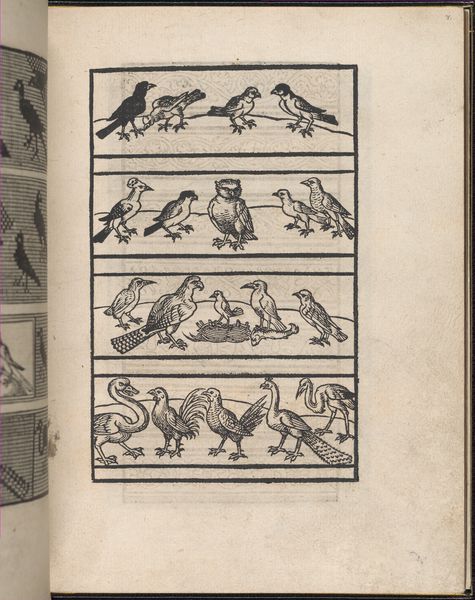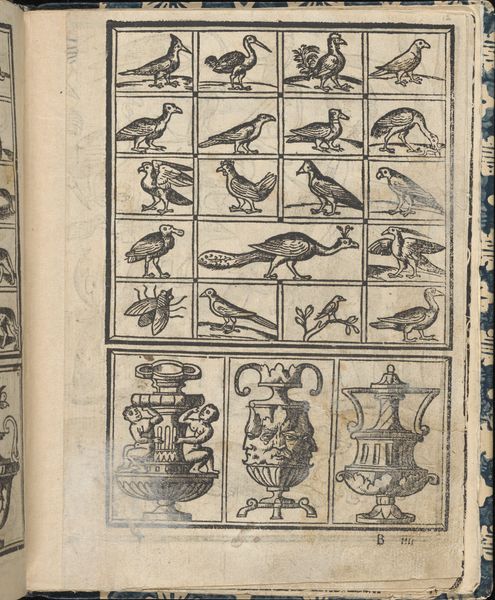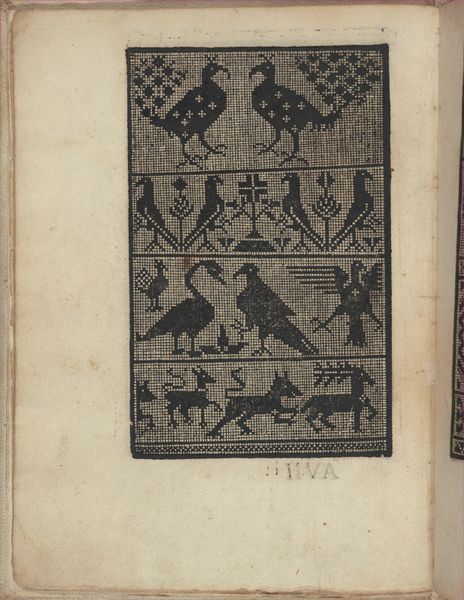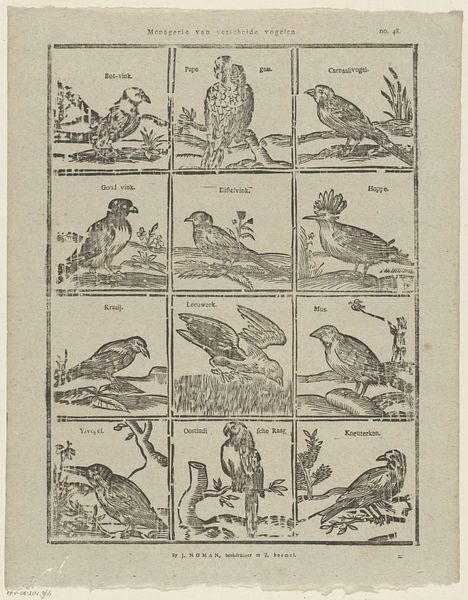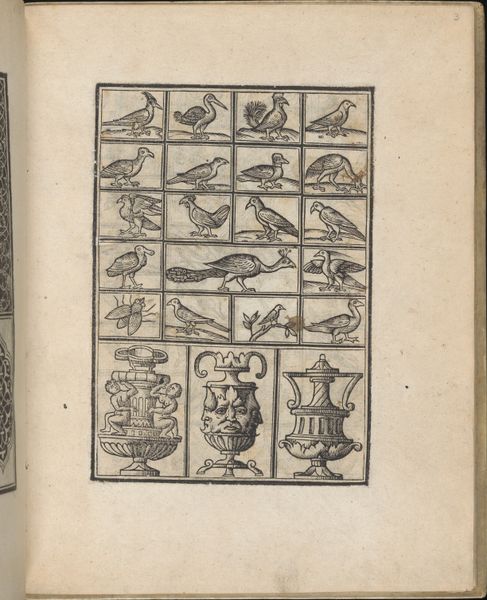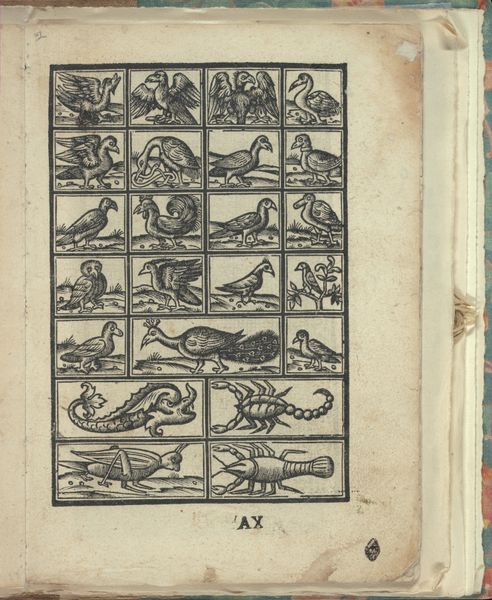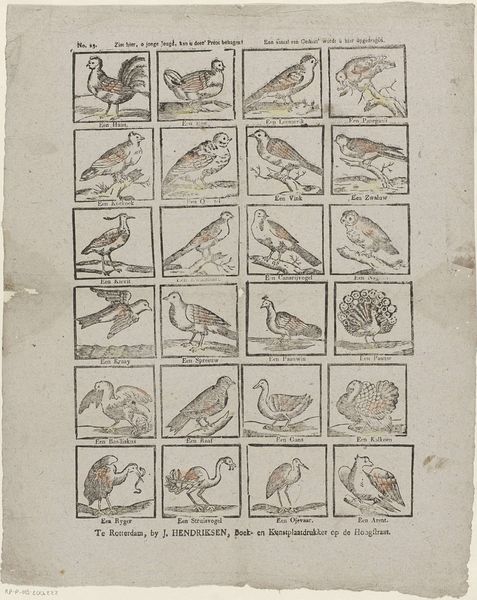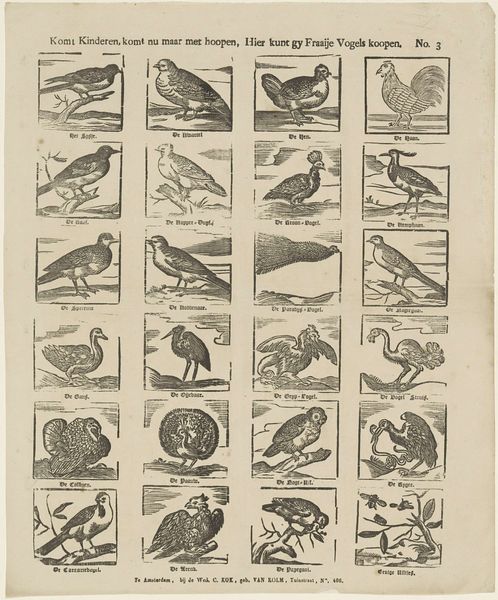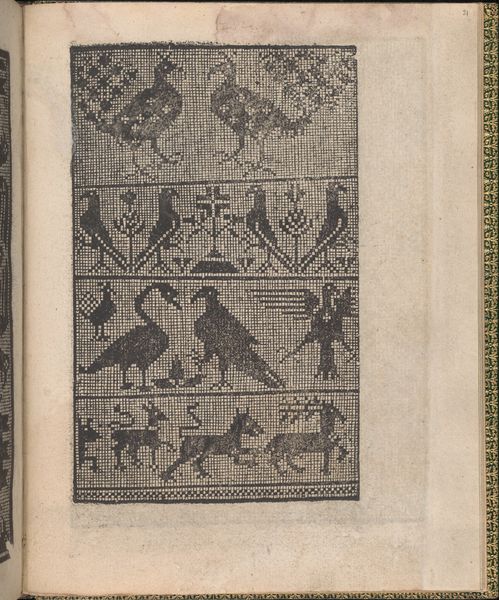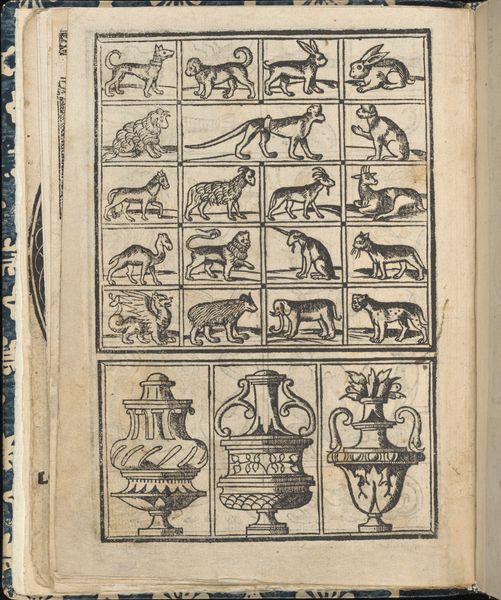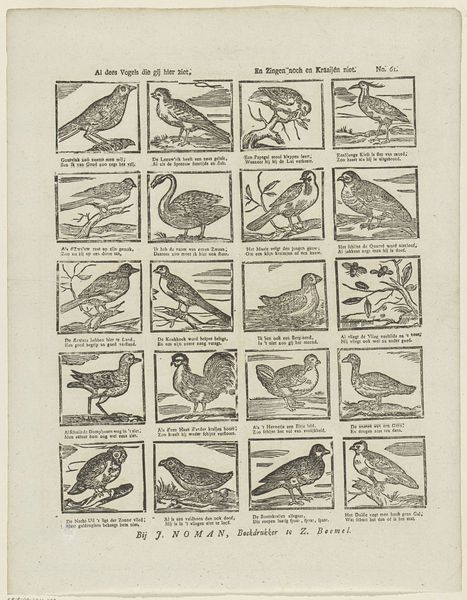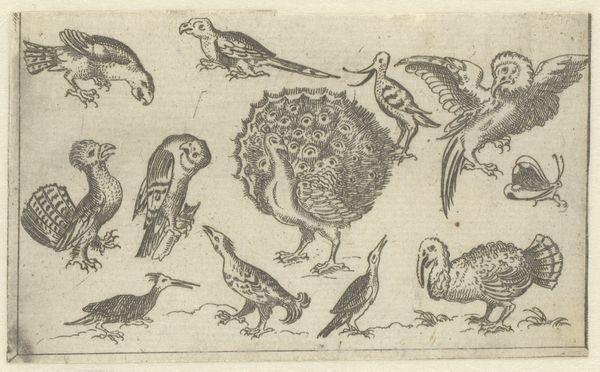
Page from Ein new kunstlich Modelbuch...(Page 7v) 1544
0:00
0:00
drawing, print, woodcut
#
drawing
# print
#
bird
#
figuration
#
geometric
#
woodcut
#
northern-renaissance
Dimensions: Overall: 7 11/16 x 5 7/8 in. (19.5 x 15 cm)
Copyright: Public Domain
Editor: This is a page from *Ein new kunstlich Modelbuch…(Page 7v)*, made by Peter Quentel in 1544. It's a woodcut showing different bird shapes against a gridded background. I’m struck by the starkness of the black and white contrast and how the geometric grid interacts with the natural forms. How do you interpret this work? Curator: I see this woodcut not just as a decorative pattern book, but as a reflection of the era’s complex relationship with the natural world. The regimented grid, contrasted with the organic shapes of the birds, speaks to the 16th-century desire to categorize and control nature. These weren’t passive decorations; pattern books like these disseminated designs influencing craft and textiles, effectively shaping the material culture and therefore, social realities, of the time. Do you notice how some of the birds are generic, while others seem more specifically rendered? Editor: Yes, there’s definitely a range, with the peacock standing out as the most detailed! Is that deliberate? Curator: Precisely! That variation might reflect different social values assigned to specific species, revealing a hierarchy within the natural world that mirrored the societal structures. The peacock, a symbol of wealth and status, receives more attention than, say, a generic crow. These weren’t simply designs, but carriers of meaning, reproducing social hierarchies in the domestic sphere. How might designs like these play into questions of gender? Editor: I never considered that aspect. Maybe it relates to women and domestic craft? Curator: Exactly! Women were major producers and consumers of these patterns. It provided a creative outlet, but one firmly rooted in prescribed roles. We need to consider both the liberating and the limiting aspects of this kind of artwork. Editor: It’s fascinating how much context can be packed into a seemingly simple design. I see this woodcut differently now. Curator: Indeed. By engaging with historical and social contexts, we move beyond aesthetics to unpack the powerful role art plays in shaping our world.
Comments
No comments
Be the first to comment and join the conversation on the ultimate creative platform.
